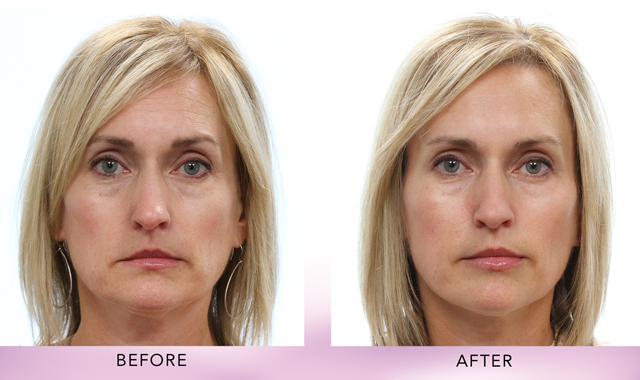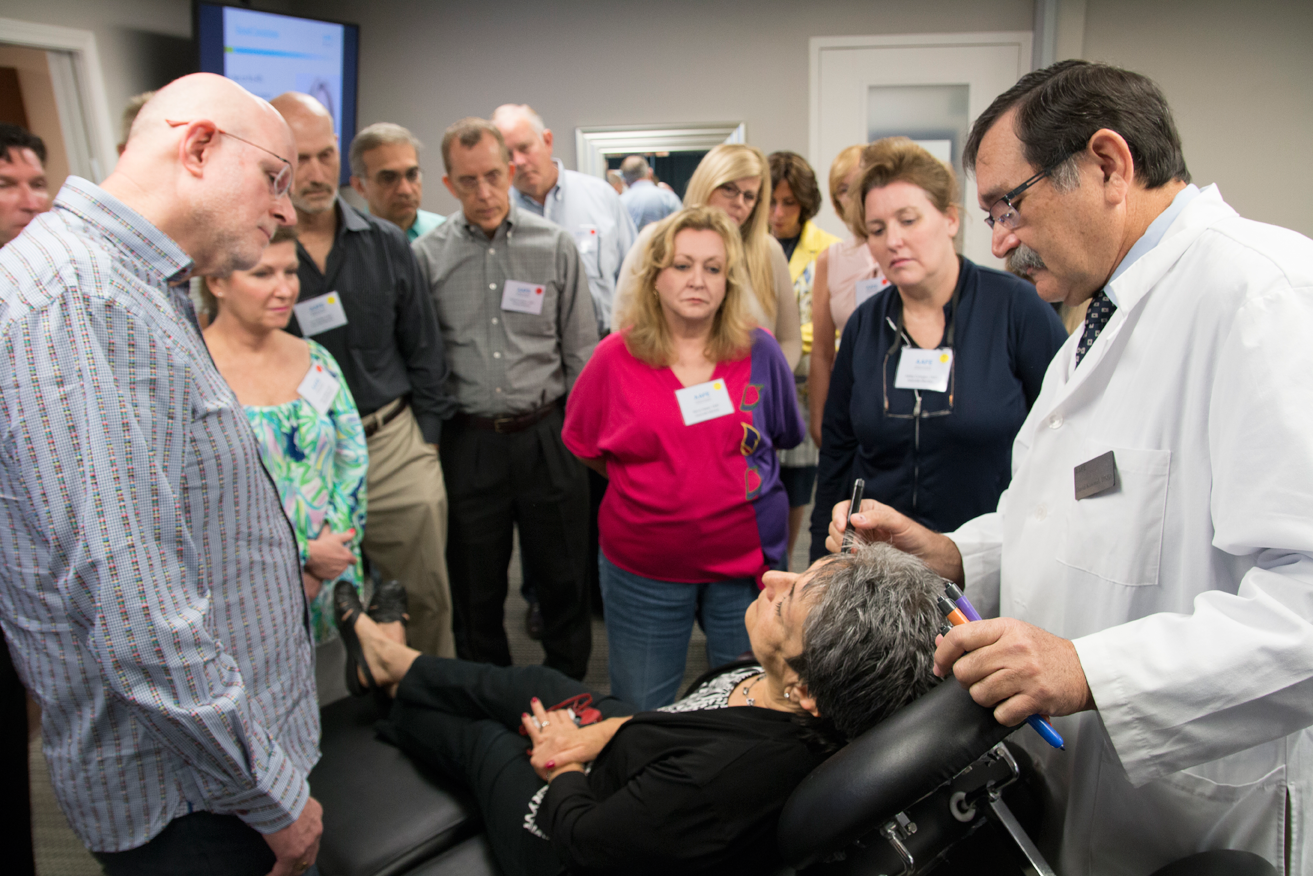How to use injectable technology in the dental practice
How new advances in injectable therapy are providing more options for patients.

Most people relate technology with a piece of capital equipment such as a new computer, a CBCT, 3D printing, CAD/CAM, lasers and the like. Truth be told, technology goes much further than that as there is an incredible amount of technology that has evolved materials, products and techniques that are used every day in dental offices.
Fig. 1: The AAFE treatment circle for facial esthetics and facial pain therapy.

The technology evolution in injectable therapy has advanced quickly since dentists have been involved heavily with Botox, dermal fillers and PDO threadlift therapy over the last 10 years (Fig. 1). Non-surgical, minimally invasive facial esthetics and facial pain therapy, like any area of dentistry, have evolved with new techniques and even with new injectables that can be used like never before.
This article will provide an overview of the different materials available based on the experience of more than 10,000 American Academy of Facial Esthetics (AAFE) member dentists and how they have worked to create better patient treatment outcomes today more than ever.
More from the author: How to effectively integrate new technologies and skills in your practice
Botulinum toxin
Botox, Xeomin and Dysport are trade names for botulinum toxin, which comes in the form of a purified protein. The mechanism of action for botulinum toxin is quite simple: It is injected into the facial muscles. Botulinum toxin binds to and affects and blocks the neurotransmitters between the motor nerves that innervate the muscle that has been injected. There is no loss of sensory feeling in the muscles. Once the motor nerve endings are interrupted, the muscle cannot contract. When that muscle does not contract, the dynamic muscle contraction will be lessened or completely stop depending on the dosage applied.
Here is where this incredible technology has made it the most common esthetic and orofacial therapeutic treatment today. Skin’s natural state is smooth and without the underlying muscle contraction, the skin then starts to smooth out over the course of two to 10 days. The effects of botulinum toxin last for approximately three to four months, at which time the patient needs retreatment. This is how botulinum toxin is known for smoothing out wrinkles in the forehead, between the eyes (glabellar region), around the corners of the eyes (crow’s feet) and around the lips.
The AAFE has taken this much further and applied the use of botulinum toxin in many new ways as a complement for esthetic dentistry cases, as a minimally invasive alternative to surgically treating high lip line cases, denture patients who have trouble adjusting to new dentures, lip flip techniques, and orthodontic cases where retraining of the facial muscles is necessary.
Many of the facial, head and neck muscles are also the cause of some or all bruxism, TMJ and orofacial pain and therefore botulinum toxin has become very effective in the treatment of these conditions as well as headaches and migraines. The AAFE protocols use this botulinum toxin technology in new ways for trigger point therapy for excellent therapeutic outcomes, which AAFE members deliver every single day to thousands of patients.
One thing the AAFE has proven over the last 10 years is that no other health care provider has the capability to help patients with botulinum toxin in so many areas as do dentists.
Related reading: 4 things to remember about facial injectables
Dermal fillers
Dermal fillers, such as hyaluronic acid (Juvederm, Restylane, Belotero) and calcium hydroxylapatite fillers (Radiesse), are commonly used to add volume to the face in the nasolabial folds, cheeks, oral commissures, lips and marionette lines. All of these areas support the upper and lower lips and directly affect the ability to smile, show more teeth, and create proper lip lines and smile lines. As we age, collagen and fat is naturally lost in these facial areas and these lines start to deepen.
Fig. 2: Dr. David Kimmel, AAFE faculty, teaching anatomy at a live patient training course.

These dermal fillers are injected right under the skin to plump up these areas so that these lines are much less noticeable. Dermal fillers are also used for lip enhancement and are used by dentists for high lip line cases, uneven lips and to make the peri-oral area more esthetic. The face looks more youthful and is now a vital component of every anterior esthetic, implant and restorative dental treatment.
One of the more exciting dental uses for dermal fillers is in the area of deficient interdental papilla, otherwise known as the dreaded black triangle, eliminating one of the biggest esthetic challenges dentists face. Dermal fillers typically can last from six to 12 months.
New dermal filler technology introduced in the last few months has allowed improved cross linking of the dermal filler products, resulting in longer lasting fillers as well as creating a more natural filler that is more flexible. This allows the filler to look more natural in different facial contours. Both the Juvederm and Restylane family of fillers include different variations for different needs such as more lift for mid-face areas and thinner fillers for subtle lip enhancement.
Continue to the next page to read a case study.
Solid filler PDO threads
One of the newest and most exciting additions to the area of dental and facial esthetics is solid filler PDO threads. Polydiaxonone (PDO) suture threads have been used in neuro, cardiac, dental and other general surgeries for more than 30 years with an impeccable safety and efficacy profile. Smooth and lifting solid filler PDO threads placed in the dermis will add an immediate visible structure and lift in the placement area and as they break down, the body produces natural long-lasting collagen.
Essentially, these PDO threads are collagen builders and add volume to the face for up to two years. Lifting threads in particular can give a physical lift to the mid-face, which supports the upper lip showing more teeth and creating esthetic lip/smile lines. These can also create a defined jaw line and add support to the lateral aspects of the oral commissures allowing a patient to smile more broadly. Smooth PDO threads are used to create perfect vermilion lip borders as well as build collagen in the same areas as dermal fillers.
More from the author: How to make the right technology choices
Fig. 3: Before and after photos of a patient treated with Botox, dermal fillers and solid filler PDO threadlift using AAFE protocols.

Case report
This case report demonstrates how the three technologies in the AAFE treatment circle are often used together. Figure 3 shows a patient in her before photo with a descending sagging lower face, large masseter muscles as a result of heavy bruxism, downturned oral commissures, and mid-face volume loss resulting in loss of lip/smile line support as well as a masculinization of her face.
Botox was used to reduce the contraction intensity of the masseter muscles, which also improved her facial esthetics by slimming her face. Botox was also used for upper face esthetic improvement. Dermal fillers were used to replace volume in her mid-face to create upper lip support and better facial esthetics. Solid filler PDO threads were used to lift the sagging lower face, create a defined jawline and will build collagen for a long-term result. The patient was thrilled with her result.
Trending article: Nevada becomes first state to allow dental hygienists to use facial injectables
Conclusion
It is a very exciting time for dental practitioners as we can now treat patients better than ever before. The AAFE has trained more than 15,000 dental professionals and provided post-course member support in the last few years who have significantly grown their practices with these evolving technologies, techniques and injectables. Botulinum toxin, dermal fillers and solid filler PDO threads offer new opportunities for dramatically increasing practice production while delivering the best esthetic and therapeutic treatment outcomes, eliminating some of the most challenging treatment frustrations for dentists. Get trained today!